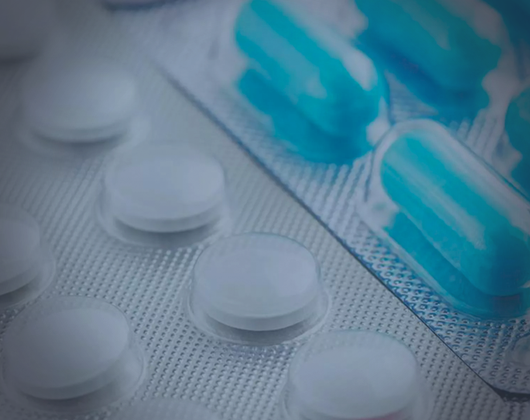Read findings from three recent Quotient Sciences scientific posters that highlight strategies we've used to streamline the development of modified-release formulations.
Modified-release (MR) formulations play a vital role in improving patient compliance and therapeutic outcomes for oral drug products. However, identifying the optimal formulation technology and delivery rate to achieve the desired in-vivo release profile can be challenging.
Traditional modified-release development programs follow a rigid, linear process that relies on pre-clinical models to predict performance in humans. This can be risky, given the poor correlation of bioavailability between pre-clinical species and humans. As a result, repeated cycles of pre-clinical and clinical testing are required to arrive at a sufficient formulation, which can be costly and time-consuming. This points to a need for a streamlined approach.
We have over 30 years of expertise in developing and manufacturing modified-release drug products.
Using our Translational Pharmaceutics® platform, we are able to integrate drug substance, drug product development, real-time adaptive Good Manufacturing Practice (GMP) manufacturing, and clinical testing activities to streamline the development of these programs. Flexible study protocols and rapid "make-test" cycles enable the optimization of modified-release formulations in real time based on rising clinical data.
As part of regulatory submissions, we obtain approval to investigate a range of formulation compositions bound within a formulation design space. This means that any formulation within the design space can be rapidly made and tested to determine the in-vivo performance of that product via its pharmacokinetic (PK) profile. Clinical data from one dosing period determines the formulation composition that is made and tested next, enabling efficient identification of the optimal formulation in an accelerated timeframe. This reduces development risks, maximizes the probability of clinical success, and saves time and costs.
Pharmaceutical and clinical performance comparisons of modified-release multiparticulates and matrix tablet formulations.
Presented at the American Association of Pharmaceutical Scientists (AAPS) PharmSci 360 conference in October 2021. Quotient Sciences' Authors: Asma Patel, Wu Lin, Aruna Railkar, Peter Scholes.
Download Poster
The purpose of this study was to review practical experiences of head-to-head pharmaceutical and clinical comparisons of two commonly used MR technologies for sustained drug release, multiparticulates, and matrix tablets, to identify an optimal MR formulation.
In most of the eight integrated clinical programs that were analyzed, the in-vivo performance of both technologies was similar, but a higher food effect was observed for matrix tablets in some cases. In all eight of the programs, matrix tablets were selected over multiparticulates, which suggested that the overall benefits of matrix tablets, including development and commercialization being simpler and cheaper, outweighed any slightly greater clinical benefits of multiparticulates.
This poster highlights how the use of formulation design spaces, integrated manufacturing and clinical testing, and flexible study protocols can enable parallel assessment of multiple MR platforms, in order to reduce development risks, efficiently identify the best technology to achieve the desired target product profile (TPP), and ultimately maximize the probability of success.
"Development of modified-release matrix tablet formulation using solid lipid Compritol® 888 for a poorly water-soluble drug"
Presented at the AAPS PharmSci 360 conference in October 2021. Quotient Sciences' Authors: Dolly Jacob, Wu Lin, Kieran Crowley, Alaa Hosny, Charlotte Clay, Katie Clarke, Peter Scholes.
This poster highlights how solid lipid excipients offer a promising strategy in the development of MR formulations for poorly water-soluble drugs.
In this study, an MR tablet was required to reduce Cmax-related side effects observed with the immediate-release formulation of a poorly water-soluble drug. The purpose of the study was to evaluate the use of Compritol 888, a synthetic solid lipid excipient that can be used as an insoluble matrix for sustained drug release, to achieve the required MR profile.
The impact on the drug release rate of adjusting the following variables in the matrix MR tablet was assessed: the level of Compritol 888, the drug loading, the use of lactose as a soluble filler, and the use of the surfactant sodium dodecyl sulphate (SLS) as a wetting agent. It was found that by adjusting the level of Compritol 888, a wide range of drug release rates could be achieved. The drug release rate was also affected by the drug loading, with a faster drug release rate observed with lower drug loading. The soluble filler promoted tablet erosion and smoothed out the overall drug release profile, whereas the surfactant did not affect the drug release rate.
"Using formulation design spaces and clinical data to optimize the development of modified-release (MR) dosage forms"
Presented at the Controlled Release Society (CRS) conference in July 2021. Quotient Sciences' Authors: Aruna Railkar, Asma Patel, Peter Scholes
This poster highlights how the use of formulation design spaces, integrated manufacturing, and clinical testing, and flexible study protocols enables efficient evaluation of critical-to-performance variables in MR formulations, which reduces development risks and maximizes the probability of success.
The purpose of this study was to conduct a review and meta-analysis of 50 integrated MR formulation development programs, including assessing the following features: active pharmaceutical ingredient (API) properties, formulation technologies, critical-to-performance parameters, formulation design space variables, in-vitro characterization methods, and clinical design flexibility.
It was found that at least 10 different MR technologies were used across the 50 programs, with diversity in physicochemical, biopharmaceutic, and drug metabolism and pharmacokinetic (DMPK) API properties influencing which technology was most suitable for achieving the target PK/product profile. For 12 of the programs, more than one technology platform was evaluated in a single clinical protocol to identify an optimal formulation. In total, more than eight different formulation attributes had clinical flexibility maximized by incorporation into a design space, with individual programs concurrently evaluating up to three different design space variables.
Summary
With a strong emphasis on science and innovation, Quotient Sciences continues to research new and improved ways to streamline the development of MR programs.
Contact us today to find out how Quotient Sciences can support your next modified-release program.
